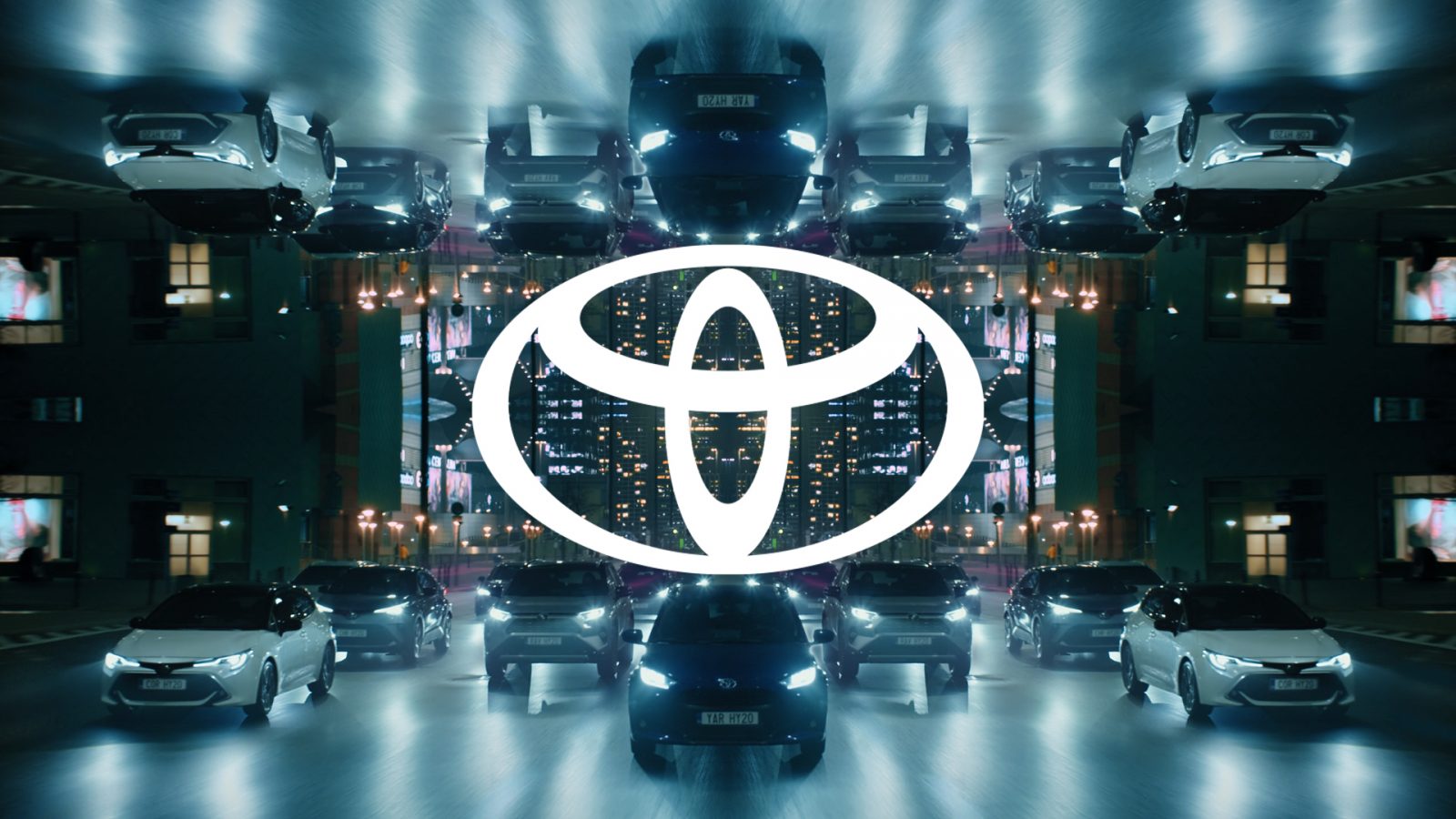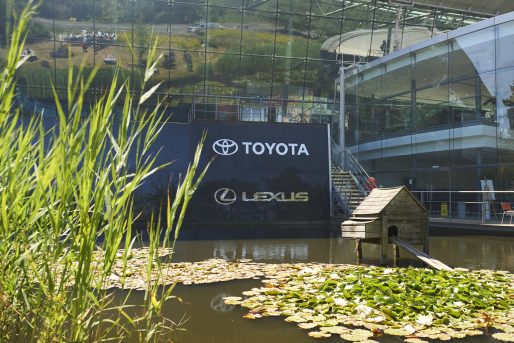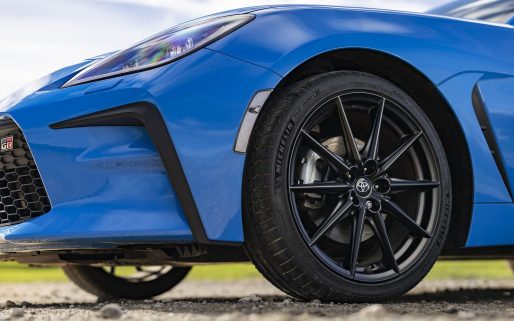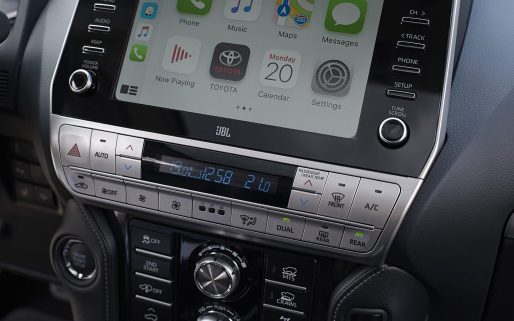What is an exhaust gas recirculation (EGR) valve?
The EGR valve in your Toyota is fitted within the exhaust system and allows some of the gases produced during the combustion process to be re-burnt within the combustion chamber for a second and more effective time. This occurs when the correct engine operating conditions are met and, in turn, serves to reduce harmful emissions.
What does an EGR valve do?
The process of recirculating precise quantities of exhaust gases back into the combustion chamber has a number of advantages. In petrol engines, it helps to lower combustion temperatures and reduces the chance of spontaneous combustion, also known as knock. This allows the engine control unit (ECU) to dilute the air/fuel mixture and reduce petrol consumption.
In diesel engines, the role of the EGR valve is even more important. Routing exhaust gases back into the combustion chamber also lowers combustion temperatures, but the primary benefit is the reduced formation of nitrous oxide (NOx) particulates. In addition, the reappearance of spent exhaust gases within the combustion chamber enables the engine to neutralise these particulates through secondary burning.
Does the work of the EGR valve relate to the function of the particulate filter in diesel engines?
Yes, but indirectly. The neutralising of NOx soot within the combustion chamber reduces the quantity of this material heading into the diesel particulate filter (DPF) installed further down the exhaust system. This increases the time period between regeneration procedures and the service life of the DPF itself.
Why might an EGR valve fail?
Its location within the direct path of flowing exhaust gases means that soot can accumulate around the EGR valve and block its free movement. It is possible to mitigate this by ensuring the vehicle is regularly driven at sustained speeds above 40mph. Constant use of any vehicle in low-speed, urban environments with frequent stops will accelerate the amount of soot collecting around the EGR valve.
How can I tell if the EGR valve in my car is failing?
A failing EGR valve will affect the performance and economy of your engine, though it is likely that the ECU will notice the issue and alert the driver through a dashboard warning light before any physical symptoms are experienced. These symptoms may include rough idling, hesitance in acceleration and a loss in fuel economy.
What do I need to do if I see the engine check light illuminate?
Return the car to your main dealer to be checked. If the fault code displayed by the diagnostic equipment relates to exhaust gas recirculation, the likelihood is that the valve will need to be either cleaned or replaced. Cleaning is much cheaper than replacement, so it is prudent to react immediately to all warning lights.







2016 model Toyota Avensis 1.6 D driven 20 thousand km. EGR-valve failure. Car gave me fault ” check parking brake ” and fault lights, but dealer diagnosed as EGR-problem.
Also, the dealer said, i can drive my car, in the meanwhile. Can this affect later on for warranty issues if they see that it has been driven with fault codes on?
Hi Pasi,
We will look into this and get back to you once we’ve heard from our Warranty team.
Hi Pasi,
We would recommend having your vehicle repaired as soon as possible. It’s unlikely that EGR failure will cause a problem in the short term. However, if you are encouraged to continue to drive your vehicle with the engine warning light still on, it is possible that further damage may be caused because of it. If determined that the vehicle has been ‘driven on’ then warranty maybe affected.
The service manual states:
“In the event of defects requiring warranty work, you are obliged to present your vehicle to an authorised Toyota repairer as soon as possible. This is to prevent defects from escalating and requiring more extensive repair than would originally have been needed.”
We hope this helps.
Hi I got a new EGR valve fitted and I’m still getting park brake system and management light on. Is there a reset button or anything to press once a new EGR valve has been fitted?
Hi Gary,
Thanks for getting in touch. The EGR valve needs to carry out a learning function when it is replaced. Dependent on the engine management system, this may take place when the ignition is switched on and left on for a short period, or it may need to be done using a diagnostic tester.
Given the reported faults, we would recommend for you to take the vehicle into your nearest Toyota Centre for diagnosis.
Hope this helps.
Hello,
I have exactly the same problem with model 2017 2.0 D. I have driven only 24 000 km and now my brand new Tojo is broken. This is my 7th and last Tojo. You have catchup the European quality. Nice work!
My message is that I don’t drive Toyota, because it’s fun to drive or it has great personality. I drive it only, because it’s cheap to run an especially it’s reliable. Now you lost that.
There is also brighter side on this. Finally I can by a real car. It will have a star in it.
Same problem here. 11600km driven, 7 months old. 4 warning lights (engine, exclamation mark, parking brake and one more) came on and display showed “Check Parking Brake System”. A quick stop at the dealer learned that the EGR vale needed to be replaced. Not sure how the EGR valve has an impact on the parking brake system, but I will leave that to the experts to judge.
Hi Marcel. I am sitting in the local Toyota garage and had the same identical problem. They are going to fit a new EGR valve next week. Car is diesel 2 litre Avensis, just 2 years old and 20000miles.
Did the change of the EGR valve sorted the problem?
Just got the same problem with same warnings. Dealer says EGR valve.
Running on low power.
I just can’t believe this.
15 month old car, 7600 miles and this sort of problem. I have done a fair mix of motorway and urban driving, as I have for the last 15 years in a selection of cars, without a problem.
I was delighted to buy a Toyota as probably my last new car, believing it to be a high quality car and would run hopefully trouble free for the next 10 years when I will be 80 years old and possibly not driving after that age.
Now I’m let down completely and have no confidence whatsoever in the car.
I will be selling it once repaired and replacing it with a petrol engined car which will most certainly NOT be a Toyota.
Delight and confidence in my new car totally ruined.
Dismayed by Toyota.
Hi Malcom,
We’re sorry to hear this. If you wish to discuss this further please contact our Customer Relations team. You can find their contact details here: https://www.toyota.co.uk/contact-us/index.json. Many thanks.
HI WHAT DETERMIN EGR ON 2014 PRIUS V TO OPEN AND CLOSE
Hi Issac,
Thanks for getting in touch. The EGR system, allows a small amount of exhaust gas to flow into the intake passage, reducing the peak temperature in the engine combustion chamber.
The operation of this system depends on the engine driving conditions and actual amount of the EGR valve opening.
Driving conditions are determined by the engine speed sensor, vacuum sensor, intake air temperature sensor, coolant temperature sensor, accelerator position and throttle position sensors.
Hope this helps.
Hi Marcel,
Thanks for getting in touch. Please could you provide us with your reg or VIN number to we can look further in to this for you. Many thanks.
I’m thinking of doing away with my EGR completely and bypassing it. 2010 Prius.
I work a lot with smaller engines and these are nothing but trouble for little gain. Am I nutz and this will be a complete failure??
Hi Dan,
Thanks for getting in touch. We would not recommend any modification to the vehicle or deviation from standard spec. Thanks.
My Toyota Auris (2012) broke down whilst driving. The car lost all power. Luckily it was peak time and I was in heavy traffic so managed to move the car to the side. Absolutely no warning signs on the dashboard. Called the RAC who ran all test but again could not find any faults. RAC guy got a hammer out and hit something and car started. He followed me Jemca Edgware Road and notified the service department what he had done to get my car started.
Next day I am told I need new EGR valve which including parts and labour is over £500. The car is 5 years and 11 months old so out of warranty period.
Why was there no warning sign on Dashboard? Should they have cleaned the valve based on other comments on blog since it would have been cheaper? The car has just done 30,009 miles. Is this a common problem on Hybrid Auris ? Any advice would be appreciated. Thank you.
Hi Gemini,
We’re sorry to hear this. Please could you provide your reg or VIN number so we can look further in to this for you. Thanks.
Hi,
I’m not usually one to comment on these things but has this article been fact checked/written by someone with technical knowledge?
My understanding of EGR, is that the exhaust gas, with its depleted volume of O2 is sent back to the engine in order to reduce the amount of oxygen involved in the burning of the fuel. This reduction in quantity, partial pressure?, reduces peak combustion temperatures.
Thermal NOx production (one of several routes to NOx production in combustion) is directly tied to peak combustion temperatures.
The descriptions of Nitrous Oxide particulates is highly misleading as well, suggesting particulates and nitrous oxides are linked. Nitrous oxide is a gaseous compound, probably more accurately described as a molecule. Particulates are solid unburnt products of combustion such as carbon.
I am unsure on the second pass aiding with reduction of particulates, I would have thought that EGR may increase particulates in some respects (decreased combustion temperatures leading to longer burnout times), but have no sources to quote or the knowledge on this point.
DPF’s handle particulate matter by collecting the unburnt carbon, and then burning it off on a hot surface that may have some sort of catalyst present, but almost certainly does not tackle NOx emissions.
I would also question whether EGR’s improve efficiency, or reduce petrol consumption as you have put it, as my understanding is that EGR effectively retards combustion to reduce thermal NOx production????
I’d be interested to see if any revisions are required to the article, or alternatively if you could link to some articles to aid with my understanding..
Cheers,
Mike
Hi Mike,
Thanks for getting in touch. We’ve spoken to our technical team they say:
Nitrogen Oxide has no connection with solid particles (soot) emitted during combustion. NOx is produced during high temperature combustion,
The most common way to reduce production of NOx is to lower the temperature of the combustion.
The EGR valve is widely used (EGR: Exhaust Gas Recycling).
The principal of the EGR is very simple, the engine runs on a specific ratio of fuel and air, the air has a certain content of oxygen (O2).
This oxygen promote the burning of the fuel to produce the energy to turn the engine.
To limits the temperature produced, some of the exhaust gas (oxygen depleted) is recycled into the combustion chamber, this gas has no combustion property and replace partially the oxygen rich air inducted into the engine.
This limit the amount of oxygen, this in turn reduces the energy and heat produced during the combustion.
Due to that, the production of NOx is reduced.
This means in fact that against general belief the use of the EGR valve DOES NOT improve the efficiency of the engine but drastically reduces it. But the software controlling the engine management has a strategy making the system imperceptible to the driver. As for the fuel consumption, this is debatable, to keep the O2 and fuel ratio optimum the engine management computer reduces the amount of fuel injected when the EGR lets the exhaust gas back in the engine (so some saving) but because the engine is less efficient on certain conditions it may counterbalance the saving.
Note: a faulty EGR valve (stuck open) will induce a drastic increase of soot expelled out in the atmosphere due to the wrong fuel/air ratio.
NOx
NO = Nitrogen oxide the X = Covers NO and NO2 at the same time.
Hope this helps.
Same problem here, Fj66 plate (so about 1.5 years old) Toyota Avensis 1.6 Diesal with only 15,000 miles on the clock and I’m already getting an EGR problem. As with others, this presented as a ‘Check Parking Brake’ error along with an engine alert and reduced performance/limp mode.
We invested most of our savings to buy a new car to avoid problems like this. My drive to work is 95% motorway driving so should be optimal conditions for keeping the EGR clear.
Am I going to have this problem every 15,000 miles? From this thread, it looks like a very common problem with Toyota Diesel engines?
Bob
Hi Bob,
Thanks for getting in touch. We’re sorry you’ve experienced this. Your car is within it’s warranty so we’d advise going to your local dealer as they’re in the best position to assist you. You can find your local dealer here: https://www.toyota.co.uk/find-your-dealer.json.
Thanks.
Thanks, its booked in with my local dealer next but unfortunately this doesn’t help me get to work and back until then (I’m assuming that there’s not courtesy car available with the warranty?)
Hi Bob,
With regards to getting a courtesy car, we’d advise discussing this with your local dealer. Thanks.
CHECK PARKING BRAKE SYSTEM came on the dashboard, along with engine warning light, master warning, break pads light.
Car is 28k miles, 1.6 d4d, I am using it in weekends as a taxi since April 2019, done cca 4000 miles as a taxi.
Took it to Toyota, they said that the fault doesn’t have to do with the breaks, is just to make the owner bringing the car in.
Diagnosis: MAP filter had to be cleaned
It happened 3 times in 2 weeks. Warning came back after couple of miles each time after taking it to Toyota.
3rd time they are saying that the manifold is clogged with carbon, cannot be cleaned, replacement is very expensive and basically they advised me to part exchange the car.
They are blaming on the fact that I use it as a taxi. I don’t use start/stop, always changing gears at at least 2000rpm, at least 150 miles motorway weekly.
Are they right saying that the warranty doesn’t cover the job?
Any thoughts on what my options are?
Many thanks in advance.
Hi there,
Thanks for getting in touch. We’re sorry to hear you’re experiencing these issues. If you could please provide a VIN number we will be able to assist you further.
Thanks.
Hi.
I am in London I have Avensis 2014 D4D 2.0
Its have Check Parking Break Message on Dashboard and engine light on too.
AA car recovery came and check with computer and told me 3 things
1 – EGR Problem –
2 – Clutch Pedal Sensor Problem
3 – Accelerator Pedal Sensor Problem
Please help…. What shall I do know….
I am planing to take my car to my private garage I hope they will fix…..
I have same problem last year and my garage clean EGR Valve.
Any advise
Hi Nasir,
Thanks for getting in touch.
We’d advise going to your local Toyota dealer as they are in the best position to assist you further.
You can find your local dealer here: https://www.toyota.co.uk/find-your-dealer.
Thanks.
Hi, I have a “05”plate Deisel RAV4 which has a recurrent problem.
Engine warning light came on & so took car to local Toyota Specialist who diagnosed EGR valve needed replaced, which was done.
3 weeks later light comes on. Garage very apologetic & said must have been faulty, & replaced free of charge.
3 weeks later light back on, so said it can only be sender unit, which replaced
A couple of weeks later light back on.
Took to main agents who ” Regenerated”. Within a week light back on.
Good news is that car doesn’t go into “limp mode”& goes well.
Help,
What do I do to make light stays off???
Hi Howard,
Thanks for getting in touch.
After speaking to our Technical Team, we would advise you to go to your local Toyota Centre to get the car diagnosed.
Unfortunately, we cannot diagnose this problem without seeing the technical data from the car.
If you need assistance locating your nearest Toyota Centre please follow this link: https://www.toyota.co.uk/find-your-dealer.
We hope this helps.
Thanks.
Clean manifold out,I had same problems,had new egr new maf sensor.cleared lights came back on 2hours later.when manifold was cleaned lights went out without clearing codes been ok since.
How do you clean manifolds out mate?
My 1.8 Petrol 2010 Verso Valvematic drives like a dream and ticks overs well.BUT driving on short journeys for 3 to 4 months warning light came on check VSC system snd car went into limp mode.
Resolved by tightening and eventually replacing Petrol cap.
One month on not realising short journeys NOT ALLOWED car warning lights on again.Having read various forums I have taken car on regular weekly burn ups and that seems to cure problem temporarily.
So now having changed petrol from 95 octane supermarket fuel to Shell higher grade and about to have oil change to O W 20 ..Last service had used higher grade 15w 40 and this I believe can impact on soot residue in EGR valve.Car serviced regularly BUT having read many comments from Toyota owners with low mileage experiencing EGR valve issues even when doing high speeds regularly I am very concerned that this problem rests in Toyotas hands and although I may need to replace EGR valve at 50000 miles I guess wear and tear will be the answer offered by Toyota.
On a high note I believe the car other than EGR issue is brilliant and such a shame that Toyota are not addressing this issue for newer low mileage cars
Hi Ray,
Thanks for getting in touch and we are sorry to hear that you have these concerns. We would advise for you to contact our Customer Relations team, you can find their details via the following link:
https://www.toyota.co.uk/contact-us/.
Thanks.
Update at 21.12.18 since oil change and now using Shell V power petrol car has done 350 miles since last limp mode and VSC warning light.
I am trying to give car a good motorway thrashing for 5 to ten minutes at 3500 to 4000 RPM twice weekly and guess this may now have met the cars computer expections for engine performance .Limp mode tended to be whilst driving round town and has never happened at high speed. Resetting the MPG readout to zero whilst driving approx 60 mph the car has been showing up to 60 MPG.Must say I am impressed with cars performance now and hopefully the Vsc warning light and Limp mode have gone away.